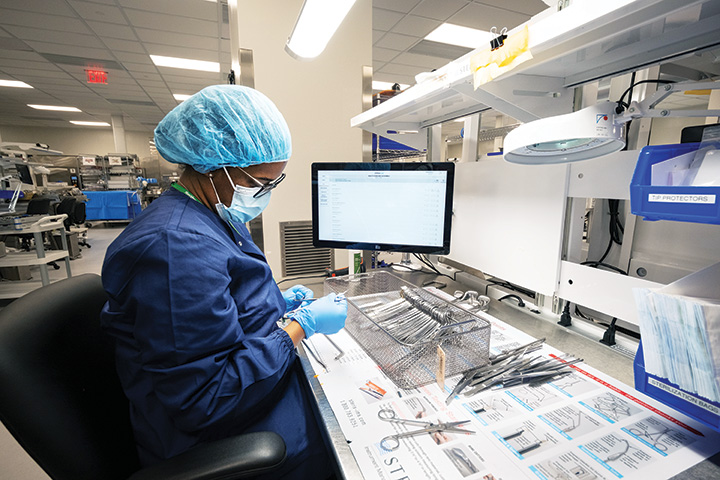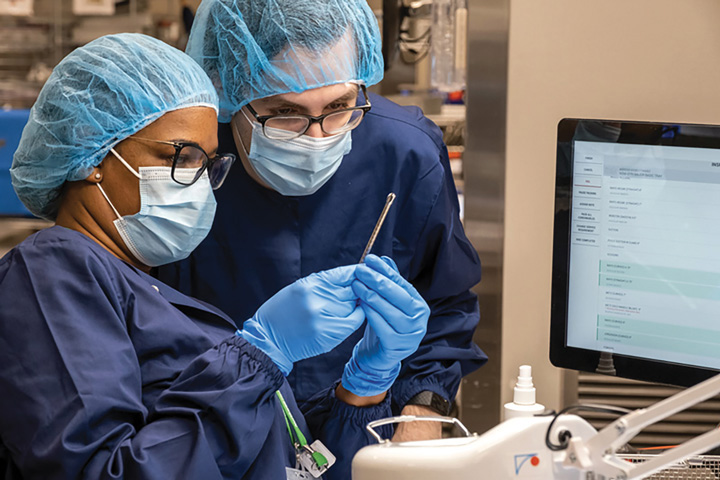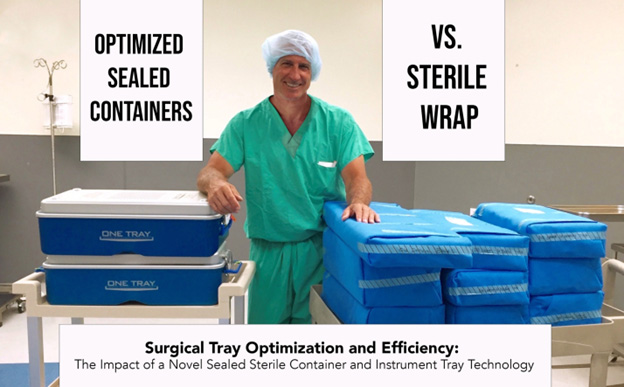Right-size your instrument rotation to reduce waste, lighten staff’s load and save money.
 ELIMINATE WASTE Reducing the number of instruments that must be reprocessed by removing little-used tools from your trays can enhance the efficiency of your service lines.
ELIMINATE WASTE Reducing the number of instruments that must be reprocessed by removing little-used tools from your trays can enhance the efficiency of your service lines.
When surgeons and nurses with UNC REX Healthcare in Raleigh, N.C., expressed concerns about instrument quality, surgical service materials manager Gretchen Steelman, BSN, RN, CNOR, MBA, sought to identify root causes of the problem. Ultimately, she and her team “right-sized” the number of instruments in rotation.
“After deciding to reduce the number of instruments in our trays and refresh the ones that remained, we wound up removing nearly 10,350 tools from 40 high-volume trays,” she says. “Eliminating rarely used items instead of paying to maintain or replace them saved our facility $530,000.” Smaller additional time and money savings were realized by not reprocessing little-used instruments, as well as decreasing the amount of space needed to store sterilized trays.
Ms. Steelman recommends surgical facilities track instrument usage to identify waste. “Focus your attention on trays that contain at least 40 instruments and observe cases in which they’re brought to the OR to determine how many of the instruments are used,” she says. Her analysis, performed with the help of a consultant and software that employs advanced analytics, identified instruments that were used less than 20% of the time, leading to the removal of nearly 20% of the instruments from each tray.
“This analytical approach is far superior to relying on perceptions or opinions to determine which instruments should stay or go,” she says, adding that access to hard usage data helped convince surgeons to remove some rarely used tools they had previously insisted upon.
After reviewing results of the data-driven analysis with service coordinators from each surgical specialty, newly optimized tray configurations were created and then trialed in the OR, where usage was audited and adjustments made as needed. “Have service line coordinators review the final tray configurations before physician champions give the changes their stamp of approval,” says Ms. Steelman.
This process can be challenging, involving much back-and-forth before consensus is reached. “Getting numerous surgeons, each of whom has preferences for different instruments, to agree is one of the biggest challenges when it comes to standardizing trays,” says Ms. Steelman, who says physician champions who embrace the changes can help convince their colleagues to compromise.
Once changes were finalized, Ms. Steelman communicated the contents of the new trays with the sterile processing department (SPD) so techs could properly configure the updated sets before sending them back to ORs. “To make the transition as smooth as possible, we created a checklist that outlined the responsibilities for each service line coordinator, the instrument liaison from SPD, the preference card coordinator and the materials manager,” she says.
The rationalization of the instrument trays produced multiple additional benefits, including repurposing instruments for use elsewhere in the health system, decreased back table setup times, and lighter trays for techs to transport between the ORs and SPD. Additionally, perioperative nurses appreciated not needing to count and prepare ultimately unused instruments.
“Given the increasing cost constraints in health care, we found that instrument tray reduction was an untapped resource for savings,” says Ms. Steelman.
.svg?sfvrsn=be606e78_3)



.svg?sfvrsn=56b2f850_5)